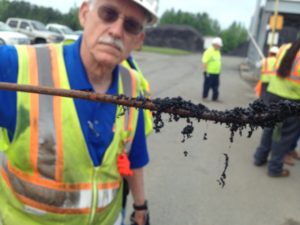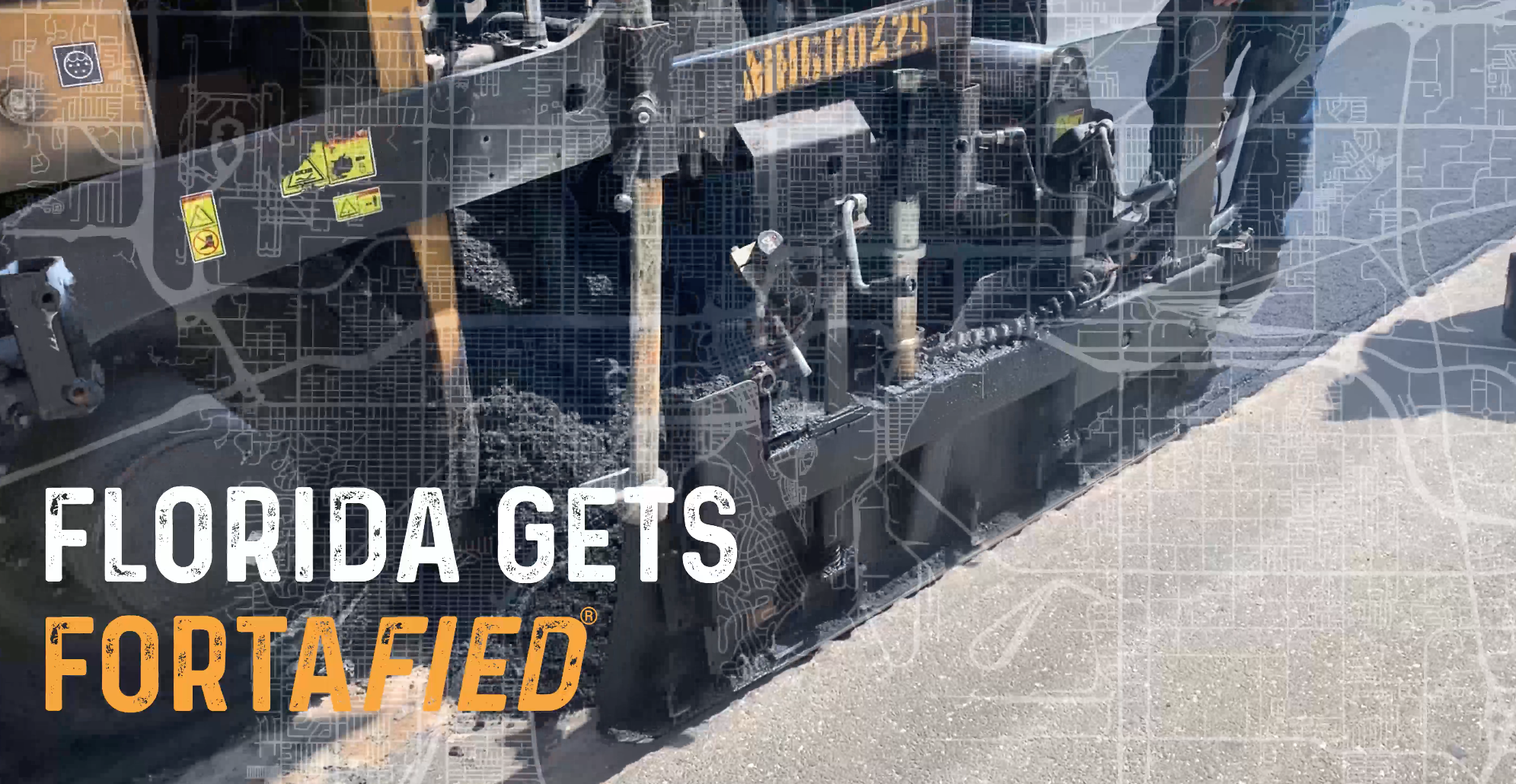The Future of Florida’s Roadways
The Problem
Florida’s roads take a beating. High tourism rates lead to more drivers on the roadways, with weather also taking its toll. Heavy rain and high heat do tremendous damage to pavement and lead to more stress on the state’s pavement and roadway systems. Left unchecked these stresses will lead to potholes, asphalt breakdown, and increased maintenance in the future.
Florida takes a proactive approach to keeping their roadways safe for their residents—ranking in the top 5 spenders for road maintenance and improvement in the country.1 One of the ways Florida cities and towns can choose to optimize their infrastructure budget is by reinforcing their asphalt mixtures with synthetic fibers.
What Can be Done?
The use of fibers to fortify building materials may seem like a new idea, but its roots trace back thousands of years. Roger Linde, Sales Representative, states, “fiber reinforcement isn’t old technology, it’s super old technology.” Although early fibers were primitive in design, they provided a structure and toughness that even Egyptian builders found very beneficial. Design and uniform distribution of these early fibers proved problematic, but the basic theory of adding reinforcement fibers to increase the toughness and durability of various building materials, proved to be valuable.

Florida Municipalities and Counties have invested in many fiber reinforcement projects across the state. The Adamson Road Project in May of 2019, offered a unique opportunity for utilizing fiber reinforced asphalt. Adamson Road was the typical “problem road” that every county in the nation faces – 80,000 lb. trucks use this road daily, causing heavy damage. Historically, this roadway needs replaced annually. With trash and transfer trucks shoving and rutting the asphalt at stop signs, distresses appear after only 3-6 months of use.
In an effort to slow the traffic, and subsequent wear and tear on the pavement, speed bumps were installed. This however, had the opposite effect, allowing increased rutting to emerge. Bruce Black, Construction Manager for Brevard County realized they had to find a better, longer lasting option. Test sections were paved utilizing different fiber solutions, with ease of use and mixability being key performance factors.
The Results
VA Paving, Inc. milled 2” of the pushed areas down to the base. Reinforcement fiber was added to the 2” overlay using a Level D Asphalt Mix. As of 18 months later, the reconstructed area with fiber hasn’t developed any signs of pavement distress. Bruce reiterated,
“The proof isn’t in the pudding, it’s in the road. We haven’t seen any deflection or cracking and had no issues with the pavement or patches.”
Al Mallard, Vice President of VA Paving, Inc. says,
“It was amazing. I took some county engineers and DOT officials down to see it. We did test strips on an area that was failing, and it hasn’t failed since we put it in there. That’s showing that it has some sort of tensile strength, and that’s not testing in a lab. That’s in the field experience with the same trucks, day in and day out pounding this road.”
The Future
Looking to the future, industry experts believe many of Florida’s roadways under high, daily distress will be fiber reinforced. Bruce Black says, “We have accepted the fact that we need this on heavy duty roads, on our arterial roads, and our highest volume roads. And we have set a plan to put fiber in the asphalt.”
Investing in pavement technology means less future maintenance and increased driver safety. This allows future funding to continue to keep Florida’s roadways in pristine condition. Learn more about the fiber reinforcement used in the Adamson Road Project.
For more information regarding the FORTA Family of Products, please review these additional sources. FORTA has spent over 40 years producing synthetic fiber reinforcement to the U.S. constructions market. Today, the company, based in Grove City, Pa., holds more patents than any other company in the industry and is recognized as a leader in synthetic fiber research and development, with successful applications around the world.
- Adrian Moore November 6, 2019. “Florida’s Highway Performance Shows Good Results at Very High Costs.” Reason Foundation, 21 Feb. 2020, reason.org/commentary/floridas-highway-performance-is-a-mixed-bag/.

